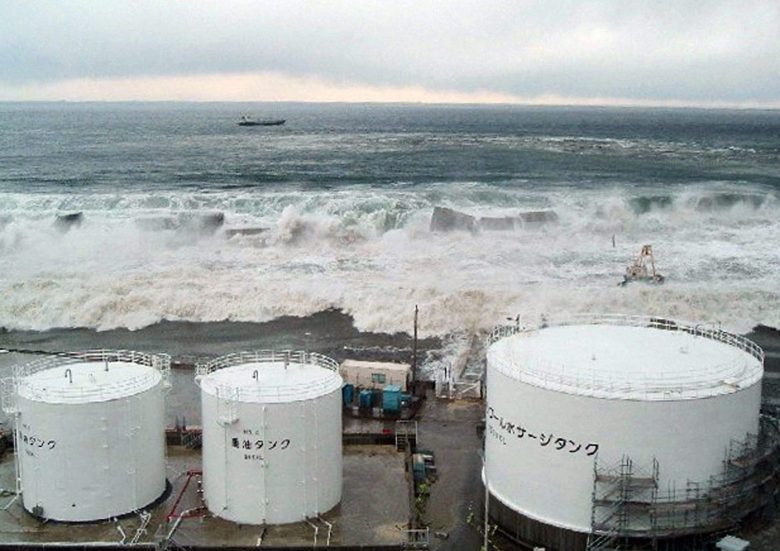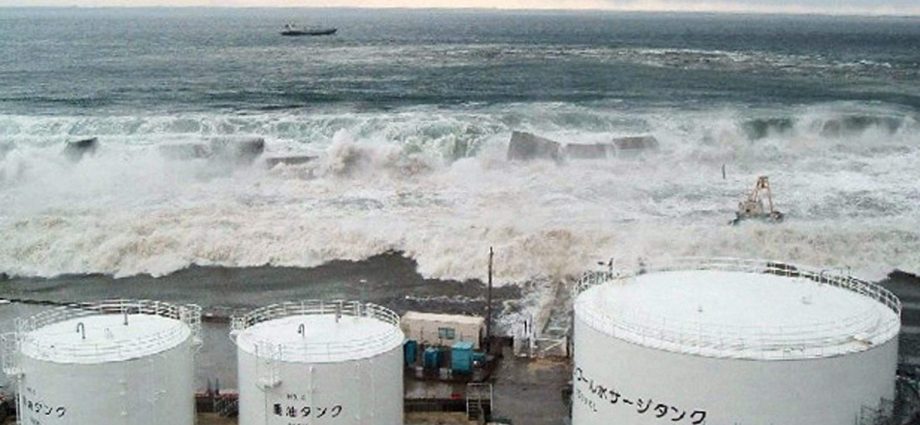A South Korean delegation visiting Japan in an attempt to stop the release of radioactive wastewater from the Fukushima Daiichi nuclear power station into the Pacific Ocean has called on Tokyo to suspend and “completely reevaluate” its plan considering the threat to marine food chains and the existence of safer alternatives such as solidification.
Speaking at the Foreign Correspondents’ Club in Tokyo on July 12, Wi Seong-gon, a member of the National Assembly of the Republic of Korea, called the Japanese government’s decision, which was recently approved by the International Atomic Energy Agency (IAEA), a violation of international law, a violation of the London Convention on the Prevention of Marine Pollution, and “a serious threat to our shared oceans.”
Yoon Jae-kab, also a South Korean national assembly member, lamented that “At one time, Japan was a country that was more sensitive to nuclear and radiation safety than any other country in the world.”
“Japan led the London Convention’s 1993 ban on the disposal of radioactive waste in the world’s oceans,” he added. “However,” in a stunning about-face, “Japan is now planning to discharge 1.33 million tons of irradiated wastewater into the ocean, even though the water is not normal treated cooling water from a typical nuclear power plant but water contaminated with meltdown-induced radiation.”
Both Wi and Yoon are members of South Korea’s opposition Democratic Party. They were joined on the podium by Park Yeon-hwan, representative of the Korea Federation of Advanced Fisheries Leader in Jeollanamdo, a seafood-producing region on the Korean Peninsula’s southwest corner, and Tomoko Abe, a Japanese congressman with the opposition Constitutional Democratic Party.
As the situation stands, Tokyo Electric Power Company (Tepco), which owns and manages the Fukushima nuclear power station, will begin discharging wastewater into the ocean in August. This will be done after the water is treated using an Advanced Liquid Processing System (ALPS) that removes radioactive materials.
On July 4, the IAEA issued a report which concluded that “the approach and activities to the discharge of ALPS-treated water taken by Japan are consistent with relevant international safety standards” and would have “a negligible radiological impact on people and the environment.”
Concerning the IAEA’s assessment, Park the fisherman asked if it’s that safe, why doesn’t Japan use the water in its own agriculture or industry?
On July 11, Japan’s Asahi Shimbun reported that Japan’s Minister of Economy, Trade and Industry Yasutoshi Nishimura had told the Fukushima prefectural fisheries cooperative association in a closed meeting that “Safety has been thoroughly confirmed, so I will explain (the plan) to you.”
His explanation was evidently not convincing, as the leader of the association replied, “We maintain our opposition to the release of the treated water. Our ultimate goal is the continuation of a safe and stable fishing industry.”

Back in 2015, Japanese authorities said they wouldn’t dump Fukushima wastewater into the sea without the “understanding” of local fishermen. They don’t have that understanding today, but they plan to do it anyway.
In an interview with South Korea’s Hankyoreh posted on June 21, Japanese National Diet member Tomoko Abe said, “This issue is not one that can be resolved by the Japanese government and the IAEA stating that the situation is fine.
“The sea is our shared asset. We need the understanding of the people who are concerned about the discharge and neighboring countries.”
Turning to water treatment, Abe noted that: “There isn’t enough data to verify the effectiveness of ALPS.” Samples were taken from only three of more than 1,000 tanks full of contaminated water and they were reportedly taken from the top of the tanks, where radioactivity is less concentrated.
“That means we can’t trust the data used to verify the effectiveness of ALPS,” she said. “This is an act of deception.” It is also an act of political convenience, as dumping the wastewater into the ocean is the cheapest and easiest solution to the problem.
The Korean delegation called both the performance verification of ALPS and IAEA’s safety assessment into question. Politician Yoon said, “Truth be told, the IAEA is an organization founded with the goal of promoting the atomic energy industry.”
But Abe is neither a total pessimist nor an inflexible critic of Japanese government policy. Asked how she thought the radioactive water should be disposed of, Abe said:
“It’s not too late. It is necessary to remove as much radioactive material as possible by running the water multiple times through ALPS, as TEPCO is doing now. Once the radioactive content has been lowered to below the threshold, it should be mixed with cement, sand, and other materials so it can be stored in solid form.”
However, groundwater is constantly flowing into the reactor site in Fukushima, coming into contact with the melted nuclear fuel and reactor components – a substance called corium – and the water used to cool the corium.
The groundwater is contaminated with numerous radionuclides, unstable elements that emit radiation as they break down including tritium, carbon-14 and isotopes of strontium, plutonium and iodine.
As Greenpeace points out in “The reality of the Fukushima radioactive water crisis,” a study published in October 2020:
“Tritium and strontium-90 have half-lives (the time it takes radiation to decay by 50%) of 12.3 and 28.8 years respectively. This means that, for these radionuclides alone, the radiation risk will remain for 125 to 290 years (the risk period is generally considered to be ten half-lives). However, there are many other radionuclides with even longer half-lives present in the contaminated water. For example, iodine-129 has a half-life of 13 million years.”
According to Tepco, the release of radioactive water into the ocean will continue for 30 years but that could prove a low-end estimate if decommissioning of the nuclear power station is delayed. In any case, the cumulative amount of radioactive water to be released over the next 30 years is likely to be huge.
According to a joint statement from 11 Korean national assembly and eight Japanese National Diet members, no estimate of this amount is publicly available. Greenpeace estimates that the 1.33 million tons of irradiated water mentioned by Yoon “could become 2 million tons within the next 10 years.”
As Yoon pointed out at the press conference, “radioactive materials dumped into the ocean are bound to be amplified and concentrated in toxicity as they move up the food chain.”
Radioactive fish, he said, will end up on our dinner tables. Wi noted that “The discovery of cesium-laden Rockfish [on the Fukushima coast] serves as a warning of the ecological accumulation of radioactive substances.”
In the more analytical language of Greenpeace, “Carbon-14 is integrated in the carbon cycle, which is very complex due to the presence of inorganic and organic carbon, in solid, liquid or gaseous forms. Put simply, carbon-14 is incorporated into all living matter to varying factors of concentration.
“With a half-life of 5,730 years, carbon-14 is a major contributor to global human collective dose; once introduced into the environment it will be delivered to local, regional and global populations for many generations.”
In a position paper issued in December 2022, the US National Association of Marine Laboratories stated that it opposes the release of radioactive water from the Fukushima Daichi nuclear power station into the Pacific Ocean.
Its assessment was “based on the fact that there is a lack of adequate and accurate scientific data supporting Japan’s assertion of safety. Furthermore, there is an abundance of data demonstrating serious concerns about releasing radioactively contaminated water.”
On the other hand, The Society for Radiological Protection in the UK states that “The IAEA verdict is entirely justifiable.” It said, “there should be no concerns that these operations [the release of ALPS-treated waste water] could in any way affect human health or the environment.”

But the UK is far away and both Chinese and Korean public opinion are inflamed on the issue.
On July 11, Hong Kong chief executive John Lee Ka-chiu told the press that if Japan releases radioactive water into the ocean, his government will greatly expand restrictions on the import of Japanese seafood products. China’s central government already did that last week. Demand for Japanese seafood has already dropped substantially in China and South Korea.
On July 12, it was reported that the Japanese government would provide fishermen with 80 billion yen ($600 million) in financial support to offset their losses and win their understanding.
Meanwhile, Japanese Prime Minister Fumio Kishida told South Korean President Yoon Suk Yeol in Vilnius on the sidelines of the NATO summit that the release of Fukushima wastewater would be suspended if the radioactivity exceeded safety standards.
President Yoon’s government has accepted the IAEA report, despite the opposition of an estimated 85% of the South Korean population. That is seen by critics as part of his efforts to improve relations with Japan. If that is indeed the case, Wi avers it’s the wrong way to go about it.
The process of releasing radioactive wastewater into the ocean might be cheap and easy, but the total cost, political as well as economic, could be very high. Another protest against the dumping plan it is scheduled to be held in Fukushima on July 17.
Follow this writer on Twitter: @ScottFo83517667

